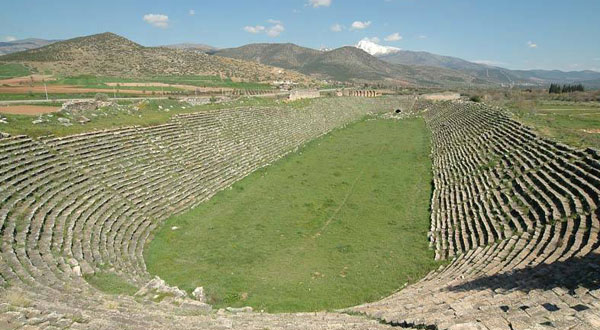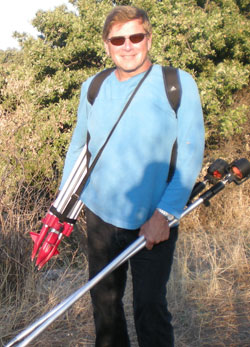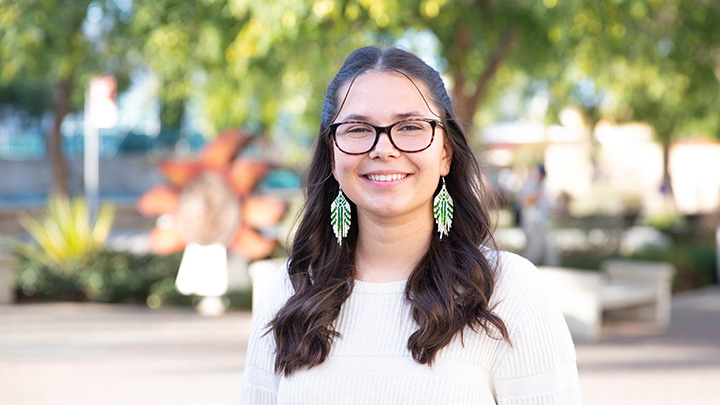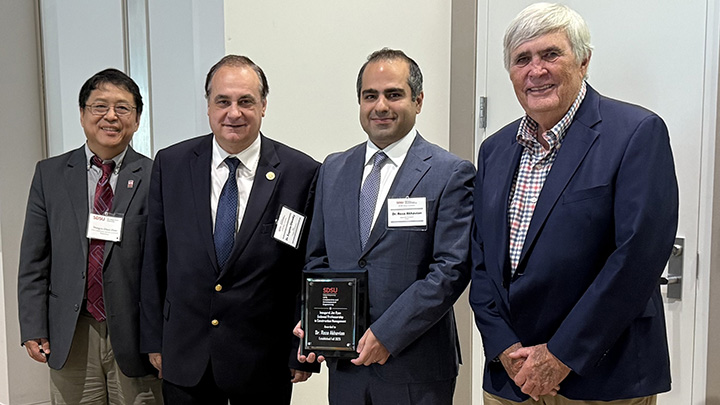Remnants of Glory
A

To the untrained eye, it looks like any other open field in the great expanse of the Turkish coastline. But Robert Mechikoff wasn’t wandering through the area without intention. He knew the overgrown vegetation disguised something special. What he didn’t know was his discovery would rewrite ancient sports history.
Mechikoff, a professor of exercise and nutritional sciences at San Diego State, had long been captivated by the Olympic Games. After attending an American college in Athens, Greece, Mechikoff began researching the history of the world’s oldest and largest pageant of athletic skill.
His research would pay off years later on the shores of the Aegean Sea in western Turkey. Below 2,000 years of plant growth lay the ancient city of Alexandria Troas. It was in contention for capital of the Byzantine Empire until the Roman Emperor Constantine chose Constantinople (present day Istanbul) instead.
Ancient stadium dates back to circa 100 B.C.
The city’s ancient stadium, which likely dates back to circa 100 B.C., was originally discovered by German archaeologists in the 1970s. It wasn’t until 2009 that Mechikoff and his colleagues from around the world, including Elmar Schwertheim from the University of Münster in Germany, became the first researchers permitted to excavate the site.

SDSU professor Robert Mechikoff is among the first researchers to excavate the ancient stadium at Alexandria Troas.
Little was known about the buried stadium. The original discovery was identified as a Roman Hippodrome in the shape of a horseshoe, which would have held the chariot races and gladiator competitions for which the Romans became famous. Mechikoff and his colleagues thought otherwise.
Greek or Roman?
Before the Roman Empire conquered the city, Greeks ruled the land. Mechikoff didn’t think the stadium was Roman at all, but an original Greek athletic venue. However, one key piece was missing – an exterior wall enclosing the stadium called a “sphendone.” After several weeks of surveying the area, hacking through brush and spiders the size of tennis balls, Mechikoff had a eureka moment.
“On the second to last day of work, my instincts replaced my scientific training and I began to search for where the sphendome would be,” said Mechikoff. “There, under centuries of vegetation and trees, a small dark shape appeared ahead of me. It was the missing link, the sphendone.”
In the wake of Mechikoff’s discovery, there are many new questions to be answered.
“When we go back, we expect to discover more information about who competed here, who were the celebrated athletes,” Mechikoff said. “Now we know it is Greek. Because of its proximity to Troy, it’s quite possible that this stadium featured some of the infamous Trojan warriors.”
Rewriting ancient sports history
Schwertheim, who has been leading excavations in the city of Alexandria Troas since 2000, said Mechikoff’s new discovery is significant as there are very few comparable stadiums and sphendones.
“If there is any possibility to excavate that part, it will not only be interesting for the history of Alexandria Troas but for the history of sports.”
Down the road, Mechikoff hopes to see the stadium restored in all its glory—a stage to recreate the athletic competitions of ancient times for all to see.



